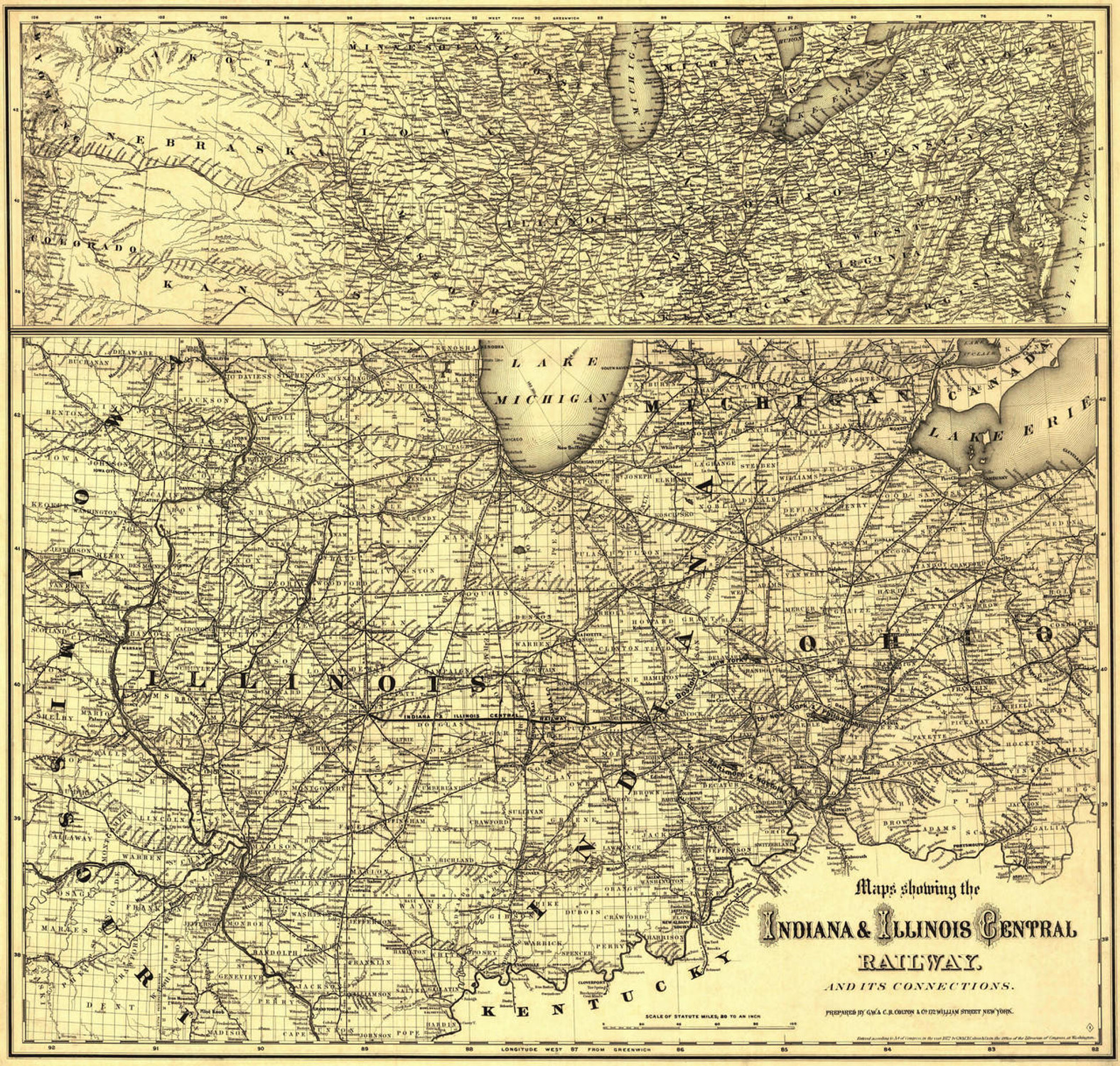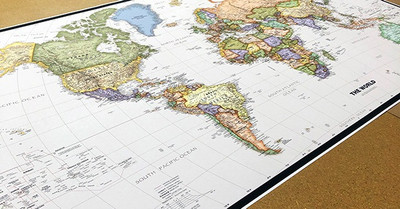This map of the mid-western United States was published in 1871 by G.W. & C.B. Colton & Co. Featuring portions of Iowa, Wisconsin, Illinois, Nebraska and the Dakota Territory, it displays lands belonging to the different railroad companies that were provided by the Iowa Railroad Land Department in 1871. It also features counties, major cities and towns, waterways, and the railroad network of the 1870's.
Chicago’s transportation importance began in the 1840's with the building of the Illinois & Michigan Canal which connected the Mississippi River with Lake Michigan. The Galena and Chicago Union Railroad was Illinois’ first major railroad endeavor. It was originally designed to connect Chicago with the rich lead mines at Galena. The line was an important factor in the settlement of Chicago and its status as a major transportation hub. The Galena & Chicago Union Railway allowed enhanced shipping of the many agricultural products of the region. Cattle, hogs, grain and other farming products were abundantly traded in Chicago. The Galena & Chicago consolidated with the Chicago & North-Western Railway in 1864. The Chicago & North-Western Railroad reached Council Bluffs, Iowa in 1867.
Below the map is advertising for 1,700,000 acres of land in Iowa and 180,000 acres of land in Nebraska at a rate of $3 to $10 per acre on time or for cash. In the advertisement it claims:
"The lands belonging to these companies are located in Iowa and Eastern Nebraska, on both sides of the 42nd parallel of latitude, and all of them are south of the 43rd parallel. They are in the same latitude as Connecticut, Northern Pennsylvania, Southern and Central New York, Southern Michigan, and Northern Indiana. The larger portion of them are in the valleys of the Missouri River and its tributaries, and none of them are far distant from the various lines of railroad, in the construction of which they were given to aid.
The title to all the lands offered for sale is perfect, and comes direct from the United States and the States of Iowa and Nebraska, and full warrantee deeds are given.
The surface of the country, excepting the bottom lands along the rivers, is always undulating or rolling, but the general elevation is quite uniform, and nowhere very high; the highest uplands and divides being only from 400 to 500 feet above the valley of the Missouri. The soil is generally a rich black loam and vegetable mould, with a subsoil of clay, and is but little affected either by long drought or continued wet weather.
The climate is healthful and bracing. The springs are generally earlier, and the falls later, and clear, cloudless days are more numerous than in the same latitudes on the Atlantic coast. The air is pure and dry, and there is much less liability to fevers and malarious diseases than in most new countries.
The principal productions of these States are corn, wheat, rye, oats, barley, flax, sorgo, and potatoes. The corn crop of Iowa in 1870 amounted to over 78,500,000 bushels. Spring wheat is the principal kind of wheat raised, and several of the varieties are of so fine a quality that the flour is nearly or quite equal to that of winter wheat. The soil and climate are adapted to almost every variety of productions grown in the temperate zone. Iowa, in 1870, ranked as the second wheat State and the third corn State in the Union.
As fruit-raising States, Iowa and Nebraska are destined to take the front rank. No finer or more perfect apples grow in any country. Plums, cherries, currants, tomatoes, sweet potatoes, grapes, and all kinds of berries and small fruits grow with but little care and in great perfection.
Timber is found along nearly every stream of any size, and upland groves are occasionally found on the prairies. All kinds of oak, and of elm cottonwood, black walnut, butternut, locust, hackberry, mulberry, hard and soft maple, and coffee bean, are the principal kinds of timber.
During the past winter, the price of wood in the counties where these Companies’ lands are situated has ranged from $2.50 to $7.00 per cord, delivered, according to quality and locality. Pine lumber for building and fencing is obtained in great abundance from all the towns on the Mississippi River and from Chicago, and is delivered in the interior and western part of Iowa and in Nebraska, at lower prices than it costs in most parts of the Eastern States.
All kinds of timber grow with wonderful rapidity. Probably the entire country would have become a dense forest had not the young trees been destroyed by annual fires which have swept the prairies for centuries past. As the country settles, and the ravages of the fires are thereby stopped, trees spring up wherever the seeds lodge in the ground.
The coal field of Iowa extends over about one-third of the State. The coal is bituminous and burns freely with a heavy blaze. The price ranges from $3 to $7 per ton, according to the distance from the mines.
Iowa now has 2,683 miles of completed railroad, and Nebraska 654 miles.
Those who buy now can secure the choicest lands in Iowa and Nebraska.
All who think of investing in land should bear in mind that the fertile farming lands of the United States are being rapidly absorbed. It is not possible that lands of the same quality, and having the same advantages of location, can ever be lower in price than the lands offered for sale by these Companies.
They are in most desirable States. They are near railroads, telegraphs, post offices, schools, and churches. They are in a civilized and comparatively well-settled country. Farmers here have the choice of an Eastern, Southern, and Western market. A large portion of the supplies for the Western mining regions, now that the Pacific Railroad is done, go from Western Iowa and Nebraska.
If you are anywhere east of the State of Wisconsin or Illinois, come via Chicago, and buy your railroad tickets to Chicago, and no further. In Chicago go to the Companies’ Branch Office, No. 1 La Salle Street, corner South Water Street (upstairs). There our agent will give you information in regard to the land, prices, etc., and also full directions what Depot to go to, and what trains to take, and will also sell you a Land Exploration ticket, which will take you to any of the various railroad stations where the lands are situated."




